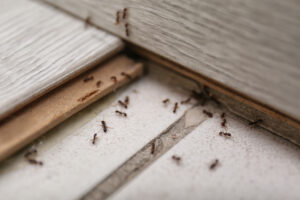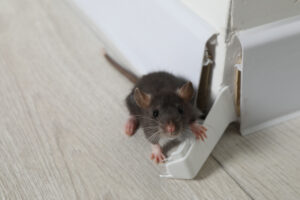As winter settles over the picturesque landscapes of Colorado, a silent drama unfolds beneath the frosty veneer—the winter habits of ants. Despite their small size, ants employ a repertoire of strategies to endure the challenges presented by the biting cold. In this exploration, we embark on a journey into the intricacies of where ants go and why during the winter months, unraveling the mysteries of their seasonal behavior in the unique climate of Colorado.
Hibernation and Diapause: Navigating the Cold Realities
In the face of Colorado’s variable winter climate, ants showcase remarkable adaptations, including hibernation and diapause. These strategies, originally evolved to mitigate food shortages, play a pivotal role in the survival of ant colonies.
Hibernation Beyond Cold Temperatures:
While the chill of winter is a factor, hibernation in ants is not solely a response to cold temperatures. In regions like Colorado, where dry periods and fluctuations in temperature are common, hibernation serves as a mechanism to conserve energy and resources during environmental challenges.

Colorado Ants hibernate in the winter!
Diapause and Developmental Triggers:
Colorado’s diverse climate introduces complexity to ant behavior. In certain ant species, larvae require exposure to colder temperatures for their development into winged males and females. This critical cold period prepares them for the spring mating flights, a spectacle that punctuates the arrival of warmer days.
Seeking Shelter Indoors: Unraveling Winter Ant Activities in Colorado
Colorado’s winter brings a tapestry of snow-covered landscapes, prompting ants to seek refuge indoors for a myriad of reasons. The quest for optimal conditions, food, moisture, and shelter leads ants to explore the interior of homes, adding an extra layer of complexity to their winter behavior.
Preferred Nesting Sites in a Mountainous Landscape:
Ants in Colorado may find refuge in inner house walls, door and window frames, or hidden spaces. The mountainous terrain introduces unique nesting opportunities, such as areas under the home’s slab, floors, cabinets, and appliances, offering protected habitats against the elements.
Decreased Activity but Not Absence:
The winter chill may decrease overall ant activity indoors, but keen observations may reveal the presence of swarmers or foragers. These sightings provide clues to the location of an ant colony within a home, a phenomenon influenced by the intricate interplay of Colorado’s winter conditions.
Reasons Beyond Cold Weather: Deciphering Ants’ Motivations in Colorado
While evading the cold remains a primary motive for ants seeking shelter indoors, their omnivorous nature introduces additional motivations. Colorado’s diverse climate and ecosystems present unique challenges and opportunities for ants, making their winter behavior a multifaceted phenomenon.
Omnivorous Appetite in the Rockies:
Colorado’s varied ecosystems offer a smorgasbord of potential food sources for ants. Crumbs, spills, and food remnants inside homes become enticing options, drawing ants indoors even in the absence of extreme cold.
Permanent Residence Amidst Favorable Conditions:
The allure of a consistent food supply, moisture, and shelter motivates ants to establish a permanent residence within the habitats of Colorado residents. Understanding their preferences becomes paramount for implementing effective pest management strategies tailored to the specific conditions of the region.
Colorado is home to various ant species, and while their winter habits can vary, many ants in the region exhibit similar patterns.
Some common ant species found in Colorado include:
Odorous House Ants (Tapinoma sessile):
Winter Habit: Odorous house ants typically forage indoors for food during the winter. They are known to seek shelter in structures, such as homes, to escape the colder temperatures.
Pavement Ants (Tetramorium caespitum):
Winter Habit: Pavement ants often nest in the soil and under pavement during the winter. They may enter homes seeking warmth and access to food.
*Carpenter Ants (Camponotus spp.):
Winter Habit: Carpenter ants are known to be less active during the winter. They typically retreat to their nests in wood structures, such as trees or houses, where they can maintain a more stable environment.
Argentine Ants (Linepithema humile):
Winter Habit: Argentine ants are highly adaptable. In winter, they may nest in soil, under rocks, or even within structures. They often form supercolonies, allowing them to spread across diverse habitats.
Red Imported Fire Ants (Solenopsis invicta):
Winter Habit: Fire ants in Colorado might remain less active during the winter. They retreat to their nests, often located in soil, to conserve energy and protect the queen.
Thief Ants (Solenopsis molesta):
Winter Habit: Thief ants nest indoors, especially in structures with warmth. They are known to be active during the winter months, seeking food within homes.
*Western Harvester Ants (Pogonomyrmex spp.):
Winter Habit: Western harvester ants are active during warmer winter days, but they generally reduce foraging activity. They nest in mounds and retreat to the depths of their nests during colder periods.
Velvety Tree Ants (Liometopum occidentale):
Winter Habit: Velvety tree ants are known for nesting in trees. During the winter, they may become less active, conserving energy within their nests.
It’s important to note that the behavior of ant species can vary based on factors such as local climate, availability of food sources, and the specific conditions of their nesting sites. Additionally, ant colonies often exhibit a degree of flexibility in response to environmental changes, adapting their habits accordingly. If you’re dealing with ant-related issues in your home, it’s recommended to consult with a pest management professional for effective and environmentally responsible solutions.




